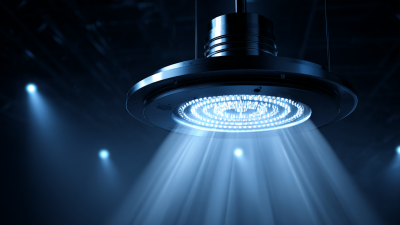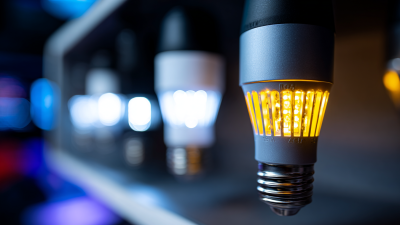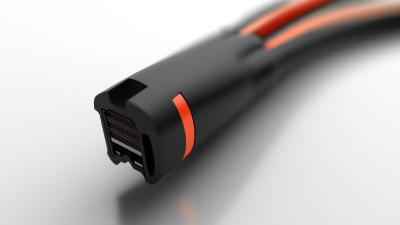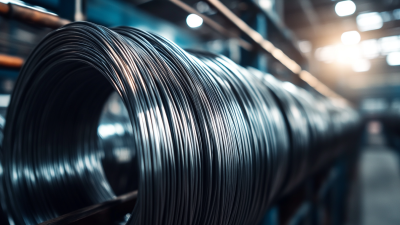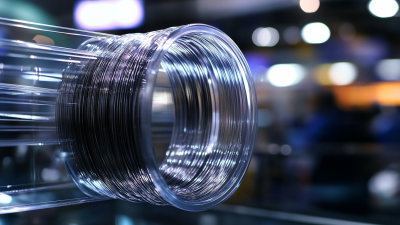Efficient lighting design is critical for enhancing the ambiance and functionality of any space, and Shineway Lighting has emerged as a key player in this domain. According to a report by the U.S. Department of Energy, efficient lighting can reduce energy consumption by up to 75%, underscoring the importance of making informed lighting choices. As organizations increasingly focus on sustainability and operational cost reduction, the use of high-performance lighting solutions like Shineway Lighting becomes even more imperative. With its innovative technology and superior light quality, Shineway Lighting not only helps to minimize energy usage but also enhances visual comfort and productivity.

In this blog, we will explore top strategies for maximizing the performance of Shineway Lighting in various environments, ensuring that spaces are not only well-lit but also energy-efficient and aesthetically pleasing.
When considering the optimal installation of Shineway lighting in your space, it is essential to pay attention to several critical factors that directly influence performance and energy efficiency. According to a recent report by the Lighting Research Center, proper placement and alignment of lighting fixtures can improve visibility and reduce energy consumption by up to 30%. This underscores the need for meticulous planning in your lighting design, ensuring that fixtures are positioned to provide adequate illumination where it's most needed.

Moreover, the choice of lighting technology plays a pivotal role in maximizing performance. The Department of Energy has highlighted that LED lighting can lead to energy savings of around 75% compared to traditional incandescent bulbs. Not only does this technology provide an extended lifespan, averaging 25,000 hours, but it also contributes to lower maintenance costs in the long run. Selecting the appropriate luminaire type and color temperature can enhance ambience while ensuring compliance with industry standards, such as those set by the Illuminating Engineering Society.
Lastly, ambient factors like ceiling height and wall color should not be overlooked, as they directly affect light diffusion and reflection. A study published in the Journal of Architectural Lighting suggests that using lighter color palettes can increase the perceived brightness of a room, allowing for lower wattage options without sacrificing quality. By considering these essential factors, you can optimize your Shineway lighting installation for both performance and efficiency.
When it comes to optimizing Shineway lighting in your space, the placement of light fixtures plays a crucial role in achieving ideal light distribution. One of the key techniques is to strategically position lights at various heights. By using a mix of wall-mounted fixtures, pendant lights, and recessed lighting, you can create layers of illumination that not only enhance the aesthetic appeal but also reduce harsh shadows and improve overall visibility.
Another effective strategy is to consider the room's usage and layout. For instance, in workspace areas, direct lighting should be aimed towards desks or workstations to minimize eye strain, while ambient lighting can be used in relaxation zones. Additionally, using reflective surfaces, such as mirrors or light-colored walls, can help amplify the light output and distribute it more evenly throughout the space. This will create a more inviting and functional environment, making the most of your Shineway lighting system.
| Placement Technique | Description | Expected Outcome | Ideal Rooms |
|---|---|---|---|
| Wall Washing | Positioning lights parallel to walls to highlight textures and colors. | Enhanced ambiance and visual interest. | Living rooms, galleries |
| Task Lighting | Directing light to specific areas where high visibility is needed. | Improved focus and productivity. | Kitchens, offices |
| Layered Lighting | Using ambient, task, and accent lighting in combination. | Balanced illumination and versatility in mood. | Bedrooms, multi-purpose rooms |
| Ceiling Height Adjustment | Adjusting light fixture heights based on room size. | Maximized light reach and distribution. | High-ceiling spaces, warehouses |
| Color Temperature Selection | Choosing warmer or cooler bulbs to set the room's mood. | Enhanced comfort and functionality. | Homes, offices, healthcare facilities |
When maximizing the performance of Shineway lighting in any space, selecting the right fixtures plays a crucial role. For instance, the integration of high-performance LED configurations has been shown to significantly enhance lighting efficacy. Recent studies indicate that utilizing advanced LED systems can improve energy efficiency by up to 30% while also delivering a superior quality of light. Dynamic lighting solutions that adjust according to the time of day can further optimize visual comfort and productivity. This adaptability is particularly beneficial in spaces such as offices and educational institutions, where different tasks require varying lighting conditions.
In educational settings, research has shown that optimal lighting design can lead to a 25% increase in cognitive performance among students. By complementing Shineway lighting with fixtures that provide a balanced spectrum, including high color rendering index (CRI) options, one can create an environment conducive to learning and focus. Moreover, recent advancements in lighting technology, such as those seen in quantum dot light-emitting diodes, offer the potential for richer color outputs and improved light distribution, which aligns perfectly with Shineway’s commitment to quality and innovation. Adopting these recommended fixtures not only maximizes the performance of Shineway lighting but also elevates the overall ambiance of any space.
Routine maintenance is essential for ensuring the longevity and optimal performance of Shineway lighting systems. According to a study published by the International Energy Agency (IEA), regular upkeep can extend the lifespan of commercial lighting by up to 30%. This is particularly crucial for environments where consistent lighting quality is necessary, such as offices and retail spaces.
Tip 1: Schedule Regular Inspections
Conduct routine inspections every six months to identify any potential issues before they worsen. Check for flickering lights, unusual sounds, or discrepancies in brightness. Proactively addressing these problems can significantly reduce downtime and improve overall efficiency.
Tip 2: Clean Fixtures and Lenses
Dust and dirt accumulation can decrease lighting effectiveness, with a report from the Illuminating Engineering Society noting that dirty fixtures can reduce light output by as much as 50%. Regularly cleaning the fixtures and lenses will maintain optimal illumination levels, ensuring that your space remains bright and welcoming.
By integrating routine maintenance practices like these, users can maximize the performance of Shineway lighting and keep their environments vibrant and productive.
Creative use of Shineway lights can significantly enhance both the aesthetic and functionality of any space, aligning with emerging trends in designer lighting that prioritize energy efficiency and artistic innovation. The architectural lighting market is projected to reach USD 18.65 billion, driven by a growing demand for aesthetically pleasing yet functional lighting solutions. By incorporating Shineway lights, homeowners can achieve a striking visual impact while improving the practicality of their environments.

Moreover, the integration of nature-inspired designs in products like the Magma Ambiance Lamp illustrates the potential of lighting that resonates with natural aesthetics. These designs not only pay homage to natural forms but also incorporate smart features, reflecting current consumer preferences for sustainability and technological innovation. Implementing such lighting fixtures in your space can elevate its charm and contribute to a serene atmosphere, perfect for modern living and working environments that demand both style and efficiency. By creatively utilizing Shineway lights, individuals can transform their spaces into visually dynamic and functional areas that reflect contemporary design trends.
